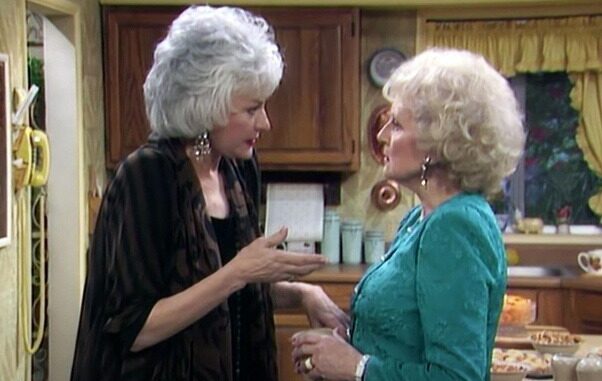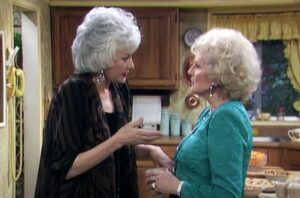
The iconic sitcom “The Golden Girls” famously brought together a quartet of talented actresses, each with their own unique personality and charm. However, the real-life relationship between two of the show’s lead stars, Betty White and Bea Arthur, has long been the subject of speculation and intrigue.
Contrary to the close-knit camaraderie that their characters, Rose and Dorothy, displayed on-screen, the off-screen dynamic between White and Arthur was far more complex and nuanced. Despite their undeniable on-screen chemistry, the two actresses shared a relationship that was often characterized as tense and, at times, even acrimonious.

The origins of this tension can be traced back to the early days of “The Golden Girls” production. While both White and Arthur were renowned for their comedic talents, they reportedly had very different approaches to their craft. White, known for her sunny and upbeat demeanor, often favored ad-libbing and a more improvisational style, while Arthur preferred a more structured and rehearsed performance.
This clash of creative styles is said to have led to frequent clashes and disagreements during the filming process. Additionally, rumors suggest that Arthur harbored a degree of resentment towards White, believing that the latter’s popularity and likability overshadowed her own contributions to the show.
Despite the behind-the-scenes tensions, the two actresses managed to maintain a professional working relationship throughout the seven-season run of “The Golden Girls.” However, the strain in their personal rapport was evident, with Arthur reportedly avoiding spending time with White off-set and refraining from engaging in casual conversation or socializing.
The divide between the two actresses was further exacerbated by their contrasting personalities. White’s warm and gregarious nature was often at odds with Arthur’s more reserved and serious demeanor, creating a palpable tension that could be felt by the rest of the cast and crew.
Yet, even with the acknowledged challenges in their relationship, both White and Arthur ultimately came to appreciate and respect each other’s talents. In the years following the show’s conclusion, they occasionally participated in joint interviews and promotional events, demonstrating a newfound mutual admiration for one another’s contributions to the show’s enduring success.

The complex and at times strained relationship between Betty White and Bea Arthur serves as a fascinating behind-the-scenes glimpse into the inner workings of one of television’s most beloved ensembles. While the characters of Rose and Dorothy may have been the very best of friends on-screen, the real-life dynamic between the actresses who portrayed them was far more nuanced and multifaceted.
Ultimately, the success of “The Golden Girls” stands as a testament to the professionalism and dedication of its entire cast, even in the face of personal differences. The show’s enduring legacy and the indelible mark it has left on popular culture serve as a poignant reminder that great art can emerge from even the most complicated of circumstances.
